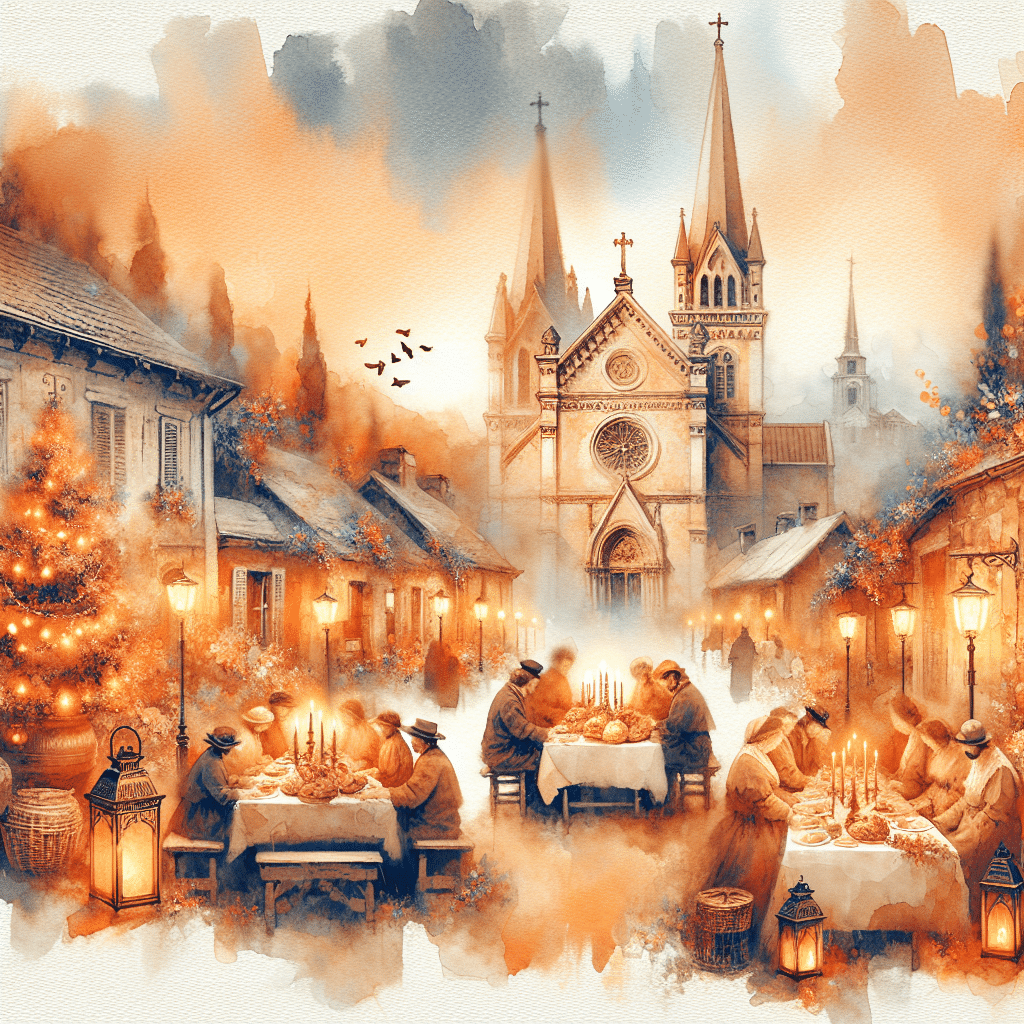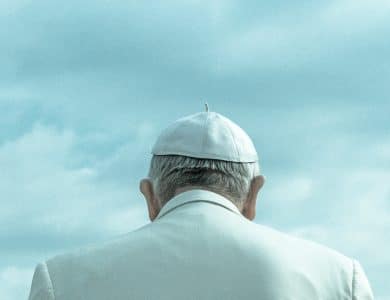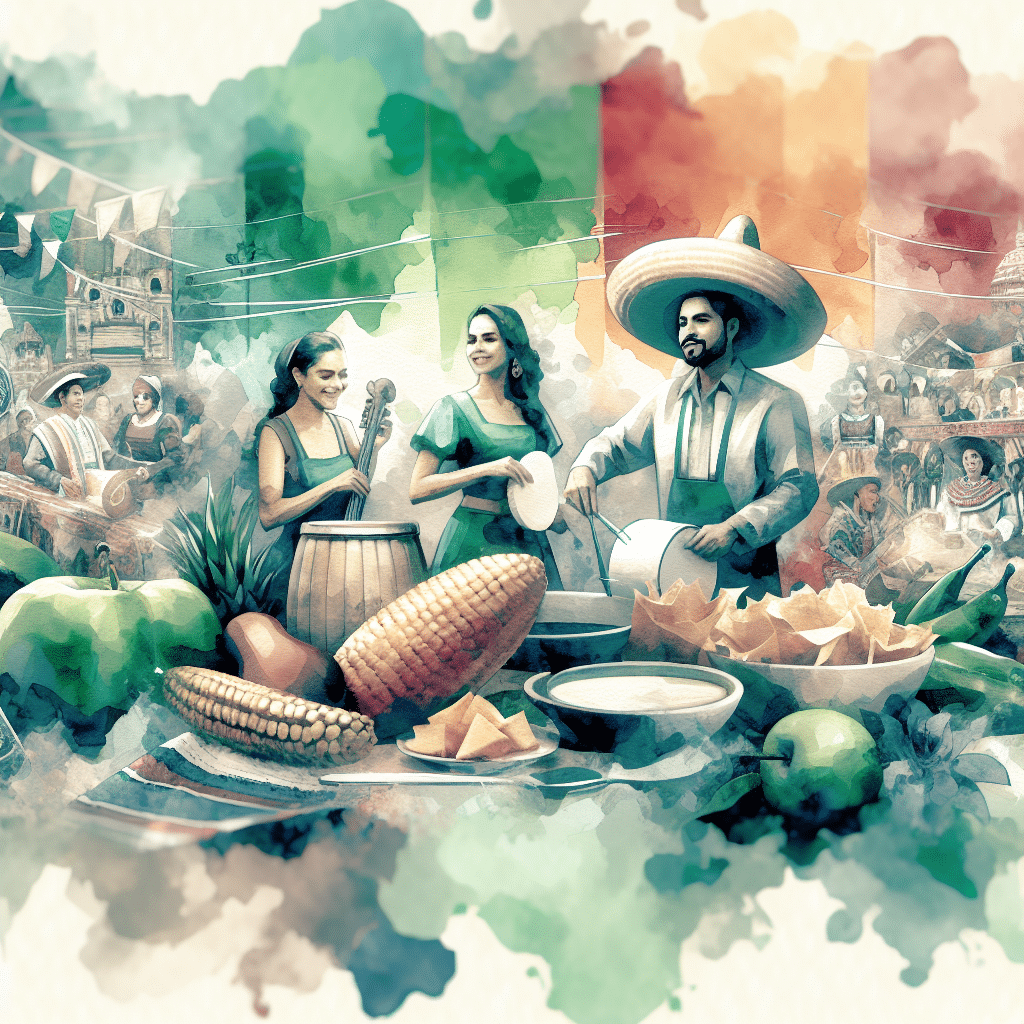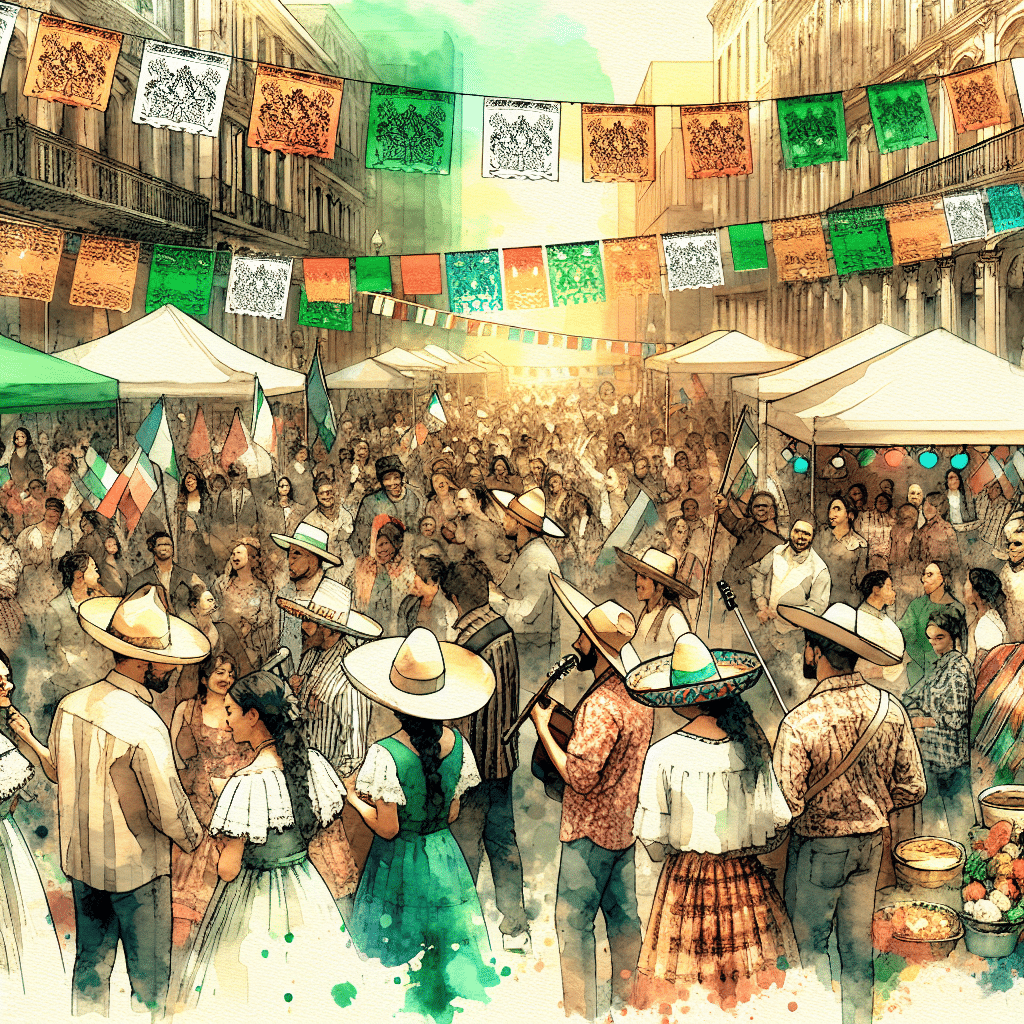
Divine Delights: Unveiling the Joyous Catholic Feast Days
The Festivity of Saints
In the lively world of Catholic feast days, saints get their moment to shine like the stars they are. From solemn remembrances to joyous celebrations, these feast days offer a mix of reverence and revelry that bring communities together.
What Are Feast Days?
Feast days are like the VIP section of the Catholic Church calendar. They mark the day on which a saint is celebrated, often coinciding with the day of their death, which is seen as their “heavenly birthday.” But not all saints have such straightforward calendars. Sometimes, the Church assigns a different day when the actual death date is unknown or if the calendar is already packed with other saintly celebrations.
The Catholic Church, with its rich and well-structured system of festive seasons, has made these feast days an integral part of the ecclesiastical year. Think of the feasts of Our Lord as the main course and the feasts of the Blessed Virgin and the saints as the delightful dessert that adds flavor to the year (New Advent).
For those who enjoy a good categorization, feast days are sorted into three main categories: solemnities, feasts, and memorials. This hierarchical system helps organize the various holidays and events throughout the Church year, providing a structured schedule for devotions and celebrations. The Church has refined this calendar over the past 450 years to standardize rituals and arrange celebrations according to importance.
| Category | Description | Example |
|---|---|---|
| Solemnity | Highest rank, celebrating major events in the life of Jesus and significant saints | Christmas, Easter |
| Feast | Celebrates events in the life of Jesus, Mary, and major saints | Feast of the Assumption |
| Memorial | Commemorates saints and important events | St. Patrick’s Day |
Saints’ Shared Feast Days
With more saints than days in a calendar year, it’s no surprise that some saints have to share their special day like roommates in a tiny New York apartment. This ecclesiastical logistics issue is resolved by pairing multiple saints on the same feast day (Dummies).
For example, October 4th is not only the feast day of St. Francis of Assisi but also of St. Petronius. It’s like a divine double feature where two saints get to bask in the glory and adoration of the faithful. This sharing system ensures that the calendar remains balanced and that every saint gets their due, even if it means sharing the spotlight.
The ecclesiastical calendar has expanded and contracted over the centuries, influenced by various factors such as ecclesiastical legislation and political revolutions. Despite these changes, the tradition of celebrating saints continues to thrive, bringing communities together in a shared expression of faith and festivity (New Advent).
For those curious about specific feast days and their significance, the feast of the assumption and other latino religious festivals offer a deep dive into these joyous occasions. Whether you’re partaking in the colorful street processions or attending special Masses, these feast days are a testament to the enduring legacy of the saints and their impact on the faithful.
Popular Saint Celebrations
Catholic feast days are like a colorful patchwork quilt, each piece adding its own flair. Among these, a couple of celebrations really steal the show: St. Patrick’s Day and St. Joseph’s Day. Let’s jump into the fun and meaning behind these two beloved events.
St. Patrick’s Day Festivities
March 17 is when the world goes green for St. Patrick’s Day. This day honors St. Patrick, Ireland’s patron saint, who is credited with spreading Christianity across the island (Dummies).
In the U.S., cities with a strong Irish heritage go all out. Imagine parades with bagpipes, Irish dancers, and even rivers dyed green. While it’s a solemn day in some dioceses, the vibe is anything but somber. It’s a lively celebration of Irish culture, complete with shamrocks, leprechaun hats, and plenty of green beer.
| City | Parade Attendance |
|---|---|
| New York City | 2 million+ |
| Chicago | 400,000+ |
| Boston | 600,000+ |
Want to see more festive events? Check out latino heritage festivals.
St. Joseph’s Day Observance
Just two days later, on March 19, we celebrate St. Joseph’s Day. This day honors St. Joseph, the husband of Mary and foster father of Jesus. It’s a big deal worldwide, especially in Europe and Canada (Dummies).
Unlike the rowdy St. Patrick’s Day, St. Joseph’s Day is more low-key but equally important. Communities mark the day with special Masses and elaborate altars filled with food, flowers, and symbolic items. If the feast falls on a Friday during Lent, the usual no-meat rule is often lifted, allowing for a hearty meal.
| Country | Unique Traditions |
|---|---|
| Italy | St. Joseph’s Tables |
| Spain | La Falla Festival |
| Canada | Special Masses |
Curious about other religious observances? Visit traditional latino celebrations.
Both St. Patrick’s Day and St. Joseph’s Day showcase the rich variety of Catholic feast days, blending religious reverence with cultural celebrations. Whether you’re parading in green or setting up a St. Joseph’s altar, these days offer a joyful peek into how saints are honored around the globe. Explore more hispanic cultural events to discover similar joyous occasions.
Religious Processions and Festivals
Whether it’s a small neighborhood or an entire city, religious processions and festivals are a sight to behold. They honor patron saints or holy days with grandeur, bringing communities together in a blend of tradition, faith, and celebration.
Street Processions and Festivals
Imagine this: a bustling street lined with people, all eagerly awaiting the arrival of a procession. On certain Catholic feast days, Catholics take to the streets in processions that are nothing short of spectacular. These events are often characterized by colorful banners, elaborate floats, and a whole lot of pomp and circumstance (Catholics & Cultures).
During these processions, statues of saints or the Virgin Mary are often carried through the streets, accompanied by hymns, prayers, and sometimes even mariachi bands. The faithful walk alongside, many of them dressed in traditional attire, adding to the festive atmosphere. It’s like a parade, but with a holy twist.
| Feast Day | Location | Highlight |
|---|---|---|
| Feast of the Assumption | Various cities | Street processions with statues of the Virgin Mary |
| St. Patrick’s Day | New York City | Green-themed parades and street parties |
| Our Lady of Guadalupe | Mexico City | Pilgrimages and colorful processions |
For more on these vibrant celebrations, check out our article on festivals in Latin America.
Special Masses and Novenas
Beyond the street processions, special Masses and novenas are also integral parts of Catholic feast days. A novena is a series of prayers said over nine days, often leading up to the feast day itself. Think of it as a spiritual countdown, but instead of fireworks, you get heavenly blessings (Dummies).
During these days, parishes may hold daily Masses, each with a specific focus or intention. The final day often culminates in a grand celebration, with a special Mass that draws large crowds. These Masses are usually followed by communal feasts, where everyone gathers to share food, stories, and a sense of community.
| Novena | Duration | Purpose |
|---|---|---|
| Novena to Our Lady of Guadalupe | 9 days | Prepare for the feast day |
| St. Joseph Novena | 9 days | Seek intercession for various needs |
| Christmas Novena | 9 days | Spiritual preparation for Christmas |
For those interested in diving deeper into these spiritual practices, our article on Virgin Mary celebrations provides more insights.
The beauty of these events lies in their ability to blend the sacred with the social, creating a unique experience that resonates with people of all ages and backgrounds. From the lively street processions to the solemn novenas, Latino religious festivals offer a rich tapestry of traditions that continue to inspire and unite communities.
Founder’s Feast Day Celebrations
Honoring Religious Orders
When it comes to the founders of religious orders, Catholics know how to mix reverence with a bit of revelry. We’re talking about a divine blend of praying and partying that would make even the most dedicated fiesta-goer proud. These feast days are like the ultimate shout-out to the OGs of the faith—the saints who started it all.
Religious orders celebrate their founders with a mix of solemn rituals and, yes, some good old-fashioned fun. Think of it like a birthday party, but with more incense and fewer balloons. These celebrations often start with special Masses dedicated to the founder, followed by activities that can include communal meals, performances, and even processions through the streets.
For example, St. Francis of Assisi’s feast day is a big deal for the Franciscans. They kick off the day with a special Mass, followed by a community meal. It’s a day filled with gratitude, reflection, and a bit of festivity.
Prayers and Celebrations
On these special days, the air is filled with more than just the scent of burning candles. Prayers and celebrations go hand in hand, creating a spiritual atmosphere that’s both uplifting and joyful. Many parishes host special Masses and nine-day novenas, which are prayer sessions that conclude on the feast day itself.
| Activity | Description |
|---|---|
| Special Masses | Dedicated to the founder, often with unique liturgical elements. |
| Communal Meals | Sharing food as a community to celebrate the founder’s legacy. |
| Processions | Public displays of faith, often featuring statues or relics of the founder. |
| Novenas | Nine-day prayer sessions leading up to the feast day. |
| Performances | Plays or musical performances that highlight the founder’s life and work. |
These activities are not just for show; they serve to deepen the community’s faith and commitment. It’s a way to honor the past while looking forward to the future, all wrapped up in a day of celebration.
For those who love a good procession, some cities and neighborhoods take it up a notch with elaborate feasts and processions honoring their patron saints or holy days. Picture streets filled with banners, music, and the faithful walking in unison—it’s a sight to behold and an experience that brings the community together like nothing else.
So, whether you’re attending a special Mass, joining a festive procession, or participating in a nine-day novena, these feast days offer a rich tapestry of faith, tradition, and a touch of jubilant celebration. For more on how these traditions shape Latino cultural events, check out our articles on Hispanic cultural events and traditional Latino celebrations.
Evolution of Catholic Feasts
History of Festive Seasons
The Catholic Church has a long history of festive seasons, kicking off with some classic celebrations borrowed from Jewish traditions like Easter and Pentecost. These were the original church parties. As Christianity spread, more feasts were added, turning the ecclesiastical calendar into a never-ending RSVP list.
In the fourth century, they rolled out the feasts of Our Lord, like Epiphany and Christmas, giving early Christians more reasons to celebrate (New Advent). By the sixth and seventh centuries, the calendar got even busier with feasts of the Blessed Virgin and the Saints. Bishops had the power to establish new feasts, so the party just kept growing.
| Century | Notable Additions |
|---|---|
| 4th | Epiphany, Christmas |
| 6th | Feasts of the Blessed Virgin |
| 7th | Feasts of the Saints |
Civil courts were even banned from holding sessions on feast days, no circus games or theater performances either. Everyone had to go to Mass instead. It was like the ultimate day off (New Advent).
Reduction of Feast Days
But, not everyone was thrilled with the growing number of feast days. By the 15th century, people started grumbling about the sheer number of days off. It was hard on the poor and led to some wild parties. Enter Pope Urban VIII in 1642, who decided to trim things down, leaving only thirty-six feasts or eighty-five days free from labor (New Advent).
Then came the French Revolution, and boy, did the calendar get a makeover. They slashed the feasts down to just four: Christmas, the Ascension, the Assumption, and All Saints. Talk about a party pooper moment! This reduction was also applied in Belgium and parts of Germany (New Advent).
| Year | Feast Days (No. of Days Off) |
|---|---|
| 15th century | Over 100 |
| 1642 | 36 |
| Post-French Revolution | 4 |
For those curious about the remaining big feasts, check out more about the feast of the assumption and other latino religious festivals. It’s fascinating to see how the calendar has evolved, reflecting changing societal norms and ecclesiastical decisions.
Church Calendar Overview
The Catholic Church calendar is like your ultimate event planner, breaking down celebrations into three main types: solemnities, feasts, and memorials. These categories help organize holidays and events throughout the Church year, giving a structured schedule for devotions and celebrations. Let’s get into the nitty-gritty and see why these days are more than just an excuse to eat cake and drink wine.
Categories of Celebrations
Solemnities: These are the VIPs of the Church calendar, holding the highest rank among Church celebrations. Solemnities recall and glorify important events in the life of Jesus, key mysteries of the Catholic faith, and honor saints. There are 24 days marked as solemnities on the annual liturgical calendar. Some solemnities are fixed (always on the same date), while others move based on the date of Easter.
Feasts: Feasts typically honor special saints, apostles, or important events in Christian history. Unlike solemnities, feasts are usually fixed dates on the calendar and do not include a vigil Mass if they fall on a weekday.
Memorials: Memorials are the third category of celebrations and are often what people refer to as “feast days.” Memorials can be obligatory or optional, fixed on the annual calendar, and often focus on the pious life of a saint. The Mass readings on memorial days are taken from Scripture related to the saint being honored.
Here’s a handy table for a quick overview:
| Category | Description | Fixed/Moveable |
|---|---|---|
| Solemnities | Highest rank, celebrates key events in Jesus’ life and major saints | Both |
| Feasts | Honors special saints and important Christian events, no vigil Mass on weekdays | Fixed |
| Memorials | Focuses on saints’ lives, can be obligatory or optional, with specific Scripture readings | Fixed |
Significance of Solemnities
Solemnities are the red-carpet events of the Catholic Church calendar. These days are not just important; they are essential. Solemnities celebrate critical mysteries of the Catholic faith such as the Resurrection, the Ascension, and the Immaculate Conception. They are the backbone of the Church’s liturgical year, setting the stage for the entire calendar.
Each solemnity has its own unique set of traditions and rituals. For example, the Feast of the Assumption is celebrated with grand processions and special Masses, especially in Latino communities where it’s a major event.
Solemnities often come with additional liturgical elements such as extended Scripture readings, special prayers, and hymns. Some are even moveable, meaning their date shifts depending on the date of Easter. This adds a layer of anticipation and excitement, making them akin to the “season finale” in the liturgical series of events.
For more detailed explorations of specific solemnities and how they are celebrated, check out our articles on Virgin Mary celebrations and Latino religious festivals.
The Catholic Church has a rich and well-structured system of festive seasons, making every day feel like a holiday. Whether it’s a solemnity, feast, or memorial, each category adds its own flair to the ecclesiastical year.
Feast Days Categorization
Catholic feast days come in many flavors. The Church calendar splits these celebrations into three main groups: solemnities, feasts, and memorials. This setup helps keep track of holidays and events throughout the Church year, giving a clear schedule for devotions and celebrations (SimplyCatholic).
Feasts on Church Calendar
Feasts usually honor special saints, apostles, or big events in Christian history. These celebrations have fixed dates and don’t include a vigil Mass if they fall on a weekday. Feasts are a key part of the Church year.
Here’s a table of some notable feasts:
| Month | Feast Day | Date |
|---|---|---|
| December | St. Francis Xavier | December 3 |
| December | St. Nicholas | December 6 |
| December | Our Lady of Guadalupe | December 12 |
| January | The Most Holy Name of Jesus | January 3 |
| January | St. John Bosco | January 31 |
| May | St. Joseph the Worker | May 1 |
| May | St. Matthias the Apostle | May 14 |
| July | St. Benedict | July 11 |
| July | St. James | July 25 |
| August | St. Dominic | August 3 |
| August | St. Clare | August 11 |
| August | St. Monica | August 27 |
For more details on specific feasts, check out our article on the feast of the assumption.
Memorial Celebrations
Memorials, the third category of celebrations, are what we often call “feast days.” Memorials can be obligatory or optional, fixed on the calendar, and usually focus on the pious life of a saint. The Mass readings on memorial days come from Scripture related to the saint being honored (SimplyCatholic).
Here’s a look at some notable memorials:
| Month | Memorial Day | Date |
|---|---|---|
| December | St. John Damascene | December 4 |
| December | St. Lucy | December 13 |
| January | St. Anthony the Great | January 17 |
| May | St. Philip the Apostle | May 3 |
| July | Our Lady of Mount Carmel | July 16 |
| August | St. Bernard | August 20 |
By categorizing these celebrations, the Church provides a clear way to honor the lives of saints and significant events in Christian history. This structure not only enhances the spiritual experience but also allows for a rich tapestry of traditions and festivities.
For more on Latino religious festivals, you might enjoy our articles on festivals in Latin America and latino religious festivals.
Liturgical Changes Over Time
Even the divine realm needs a bit of a refresh now and then. Over the years, the Catholic Church has made several tweaks to its liturgical calendar, especially when it comes to Marian feasts and enhancing formularies. Let’s see how these changes have kept our heavenly celebrations fresh and fabulous.
Marian Feast Alterations
In 1969, the Catholic Church decided it was time for a feast day diet. The number of Marian feasts was trimmed from twenty-one to fourteen, putting more focus on the feasts of the Lord. This meant saying goodbye to some locally celebrated events like Our Lady, Queen of Apostles, Our Lady of Ransom, and the Most Holy Name of Mary.
To keep things interesting, the church also shuffled some dates around. The feast of the Motherhood of Mary, for instance, was moved from October 11 to January 1, highlighting Mary’s role as the holy Mother of God (All About Mary).
| Feast Name | Original Date | New Date |
|---|---|---|
| Motherhood of Mary | October 11 | January 1 |
| Our Lady, Queen of Apostles | Removed | – |
| Our Lady of Ransom | Removed | – |
| Most Holy Name of Mary | Removed | – |
For those who can’t get enough of Marian celebrations, don’t worry. Significant feasts like The Assumption of the Blessed Virgin Mary on August 15th and The Immaculate Conception on December 8th are still very much on the calendar (All About Mary). Check out our page on the feast of the assumption for more details.
Enhanced Formularies and Options
The 1980s saw the Catholic Church giving Marian celebrations a bit of a makeover. In 1986, the Congregation for Divine Worship published a collection of forty-six Marian Mass formularies. This impressive collection expanded the options for celebrating Mary throughout the liturgical seasons (All About Mary).
This collection allowed for greater integration of devotion to Mary in various ways, giving worshippers more chances to honor her. Whether it’s during the Feast of Our Lady of Guadalupe, a favorite among Latino religious festivals, or in the quiet moments of a daily mass, these formularies offer a deeper connection to Marian devotion.
For those passionate about Virgin Mary celebrations and traditional Latino celebrations, these enhanced formularies add a layer of richness to the liturgical experience. They ensure that Mary’s presence remains a vibrant part of the Catholic faith, no matter how much the calendar evolves.
In a world where change is the only constant, the Catholic Church’s liturgical calendar proves that even sacred traditions can benefit from a little reorganization. Whether you’re attending a Hispanic cultural event or simply reflecting on the significance of these feast days, the updated liturgical changes keep the celebrations meaningful and engaging.




